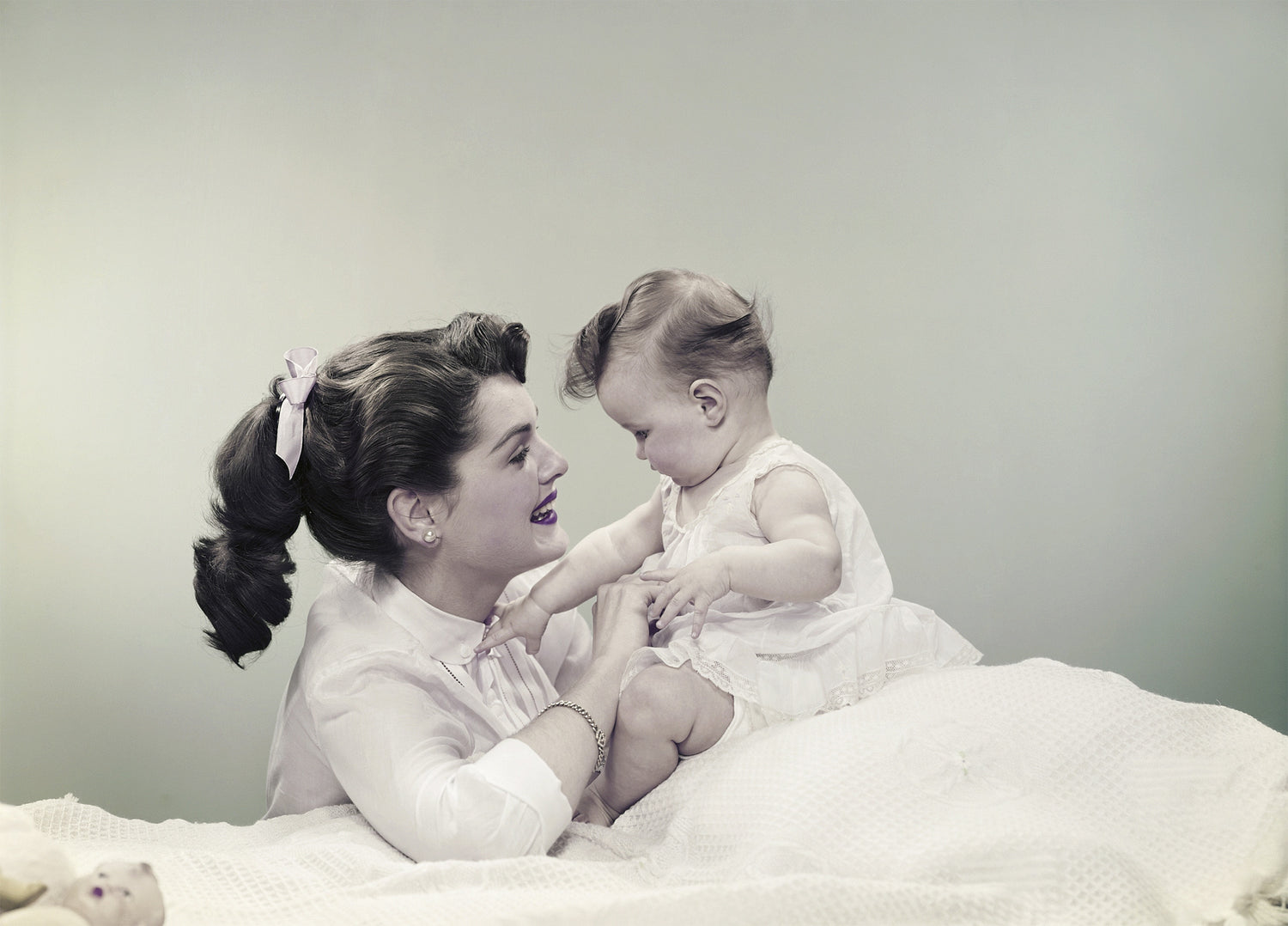1910s
Pain management emerges…sort of I feel confident speaking on behalf of women of the 1910s when I say this was a terrifying decade to have a baby. Not only were 90 percent of doctors practicing medicine without formal education (!!!), but they implemented Twilight Sleep – a method of pain management that has a pleasant sounding name but in reality was anything but pleasant (risky combo of morphine and a “scope” that frequently left newborns with breathing problems and new mothers with temporary amnesia). Parent Co. partnered with Americord because we believe in preserving the power of baby’s first connections.
1920s
The intervention-happy decade Lurk in any pregnancy and birth forum and you’re likely to stumble upon a debate about the necessity (or overuse) of birth interventions. But none of these debates on the interwebs compares to the intervention-happy doctors of the 20s. Why the obsession with interventions, like sedatives, episiotomies, and forceps? Well, one name rises to the surface: Dr. Joseph DeLee. The head of OB at Northwestern University and a highly influential voice of his time, Dr. DeLee used the first issue of the American Journal of Obstetrics and Gynecology as a platform to encourage doctors to use all the interventions available to suppress the “evils natural to labor.” I know that contractions feel like evil, but I’m not so keen on a routine Twilight Sleep-episiotomy-forceps combo. Yikes! 1930s
Rising rate of hospital births A huge departure from the stats of 1900, in the ’30s nearly all (75 percent) of births occurred in a hospital. Thanks to all those interventions and the continued use of Twilight Sleep (seriously, people?), birth injuries were on the rise. Moms had no awareness, let alone opinion, of her labor and delivery. Even though most women gave birth at home, the American Hospital Association created insurance so that hospital births were made accessible to more women. This was the birth of the Blue Cross Association. The monthly premium? Fifty cents. 1940s
Making childbirth easier – for the doctors More and more women delivered in hospitals, but interventions were still a bit on the scary side. Sure, women had pain-free births thanks to chloroform and opium, but they were also subject to procedures that made birth easier for the doctors. Think: shackles, pubic shaving, and routine enemas. Mamas-to-be still had to endure birth without any support from her partner. 1950s
Back to birth as a natural phenomenon Learning about birth prior to the 50s made me thank my lucky stars I wasn’t a laboring mom in the first half of the 20th century. But the 50s planted the seed of what we see in labor and delivery rooms today. Dr. Ferdinand Lamaze and Dr. Robert Bradley made their mark by re-introducing the naturalness of birth. A bit of trivia: If you’ve ever laid in a doctor’s office staring at the ceiling and praying to hear that “thump thump thump” on the Doppler, you can thank Dr. Edward H. Hon, who invited the machine in 1958. 1960s
Burn the bra and whatnot The feminist movement of the 60s also spread to the delivery room, where women reclaimed control of their bodies and their births. Birth classes empowered women to partake in decisions and pain management options. Fathers were allowed into the delivery rooms for the first time.
1970s
Dawn of the epidural The decade of the epidural. Finally, a pain management option that didn’t involve morphine or opium! During this time, many mothers started looking back in time for birth advice, creating a “new” movement for home births once again. Sometimes it’s best to get back to basics.
1990s
Boom in OB technology While mothers still continued to have a voice in the delivery room, advances in technology to monitor the health of the baby continued to explode into OB offices. Amniocentesis became a viable option to check for genetic abnormalities, and fetal ultrasounds became part of standard care. 2000s
Boutique pregnancies C-section births continue to rise – particularly elective C-sections scheduled at the convenience of both doctors and patients alike. Nearly one in three births are a C-section during the first decade of the 21st century. Boutique ultrasound studios offered parents the opportunity to “peek” at their baby before birth, thus creating an entire party genre: the Gender Reveal. 2010s
Present Women aren’t merely voicing their opinions; we tote fully dictate birth plans to the hospital or birthing center. Ruth Castillo, a doula and Lamaze Certified Childbirth Educator from Salty Mama recognizes the incredible movement towards birth as a family event: “It’s amazing that the medical side of birth is starting to soften to include the entire family in the event. Partners can be present to support birthing moms through vaginal and cesarean births in so many cool ways.” This is the decade in which women research birth and medical practices and are incredibly informed on every step of the way. Birth is seen as a natural process that women celebrate. Hello, push presents! Postpartum care has also revolutionized with incredible attention to healing moms both physically and emotionally after birth. This decade also marks one of the greatest scientific advances in labor and delivery. We are not only saving lives during L&D today, but we are also saving lives tomorrow thanks to the hematopoietic stem cells (HSCs) stored during the cord blood banking process. Even moms can get a taste of the lifesaving power of the placenta with the option to bank placenta tissue. The HSCs extracted during both of these processes can morph into the blood cells and cellular blood components in our bodies (white blood cells, red blood cells, platelets, etc.). Cord blood and placenta tissue cells can be used to treat 80 diseases in you, your child, or your blood relatives.
Parent Co. partnered with Americord because we believe in preserving the power of baby’s first connections.
Additional sources:
The History of Midwifery and Childbirth in America: A Time Line via Midwifery Today
Medical Education in the United States and Canada via Carnegie Foundation



